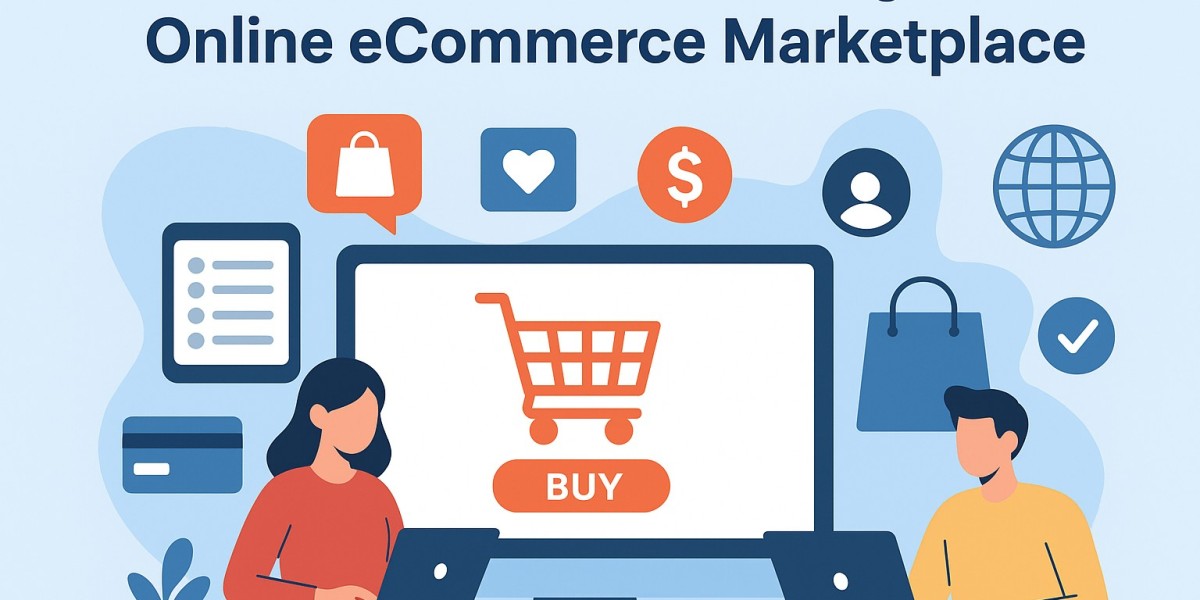The rise of digital technology and the shift in consumer behavior have created an ideal environment for entrepreneurs to launch and manage online marketplaces. An eCommerce marketplace is more than just a digital store; it is a hub where multiple vendors can connect with buyers and showcase their products on a shared platform. With global retail eCommerce sales projected to reach over 7 trillion USD by 2025 according to Statista, building an eCommerce marketplace is a lucrative opportunity for business owners. However, creating and managing such a platform requires careful planning, technological investment, and consistent optimization.
In this guide, we will explore the essential steps to start and manage an online eCommerce marketplace. We will also look at the technologies, strategies, and trends that drive growth in the modern digital economy.
Understanding the concept and scope of an eCommerce marketplace
An eCommerce marketplace is a platform where multiple sellers can list and sell products or services to buyers. Unlike traditional online stores that are managed by a single retailer, marketplaces serve as intermediaries between buyers and sellers, providing a wider range of options, competitive prices, and convenience.
Examples of successful marketplaces include Amazon, eBay, and Alibaba. Each of these platforms serves millions of users and sellers worldwide, generating billions in revenue. According to eMarketer, marketplaces account for more than 60 percent of global online retail sales, making them the dominant model in digital commerce.
The scope of an eCommerce marketplace extends beyond retail shopping. Marketplaces can also cater to services, B2B transactions, niche industries, and even digital products. Entrepreneurs must identify which type of marketplace they want to develop and align their platform with target audience needs.
Planning the foundation and business model of your marketplace
Before starting development, it is essential to define the business model. There are three popular types of eCommerce marketplace models:
Business to Consumer (B2C) – Retailers sell products directly to customers.
Consumer to Consumer (C2C) – Individuals sell products to other individuals, such as eBay.
Business to Business (B2B) – Companies sell bulk goods or services to other businesses.
Another critical step is to decide how the marketplace will generate revenue. Common models include:
Commission per transaction
Subscription fees for sellers
Listing fees for products
Featured placements or advertisements
The foundation also involves market research. Identifying gaps in the market, understanding competitors, and studying consumer preferences are vital for long-term success. According to Nielsen, 73 percent of new product launches fail due to insufficient research and planning, which shows why early groundwork is necessary.
Building the technology stack for eCommerce marketplace development
The technology backbone is the most important component of marketplace success. eCommerce marketplace development requires a combination of software tools and frameworks that ensure security, scalability, and user experience.
Some essential features include:
User-friendly interface with personalized dashboards for buyers and sellers
Product management tools for vendors to upload and manage listings
Secure payment gateways supporting multiple payment options.
Inventory management with real-time updates
Mobile-first design since 73 percent of eCommerce sales happen via mobile devices according to Oberlo
Analytics dashboard for tracking sales, performance, and trends
Choosing between a custom-built platform and a ready-made solution is a critical decision. While ready-made solutions reduce costs, custom-built platforms allow greater flexibility and scalability. Many startups choose to collaborate with a Mobile App Development Company to ensure their marketplace functions seamlessly across devices and platforms.
Designing user experience and interface for better engagement
User experience and design can directly influence conversion rates and customer retention. According to Forrester Research, a well-designed user interface can increase conversion rates by up to 200 percent, and a better user experience design can boost it by 400 percent.
The marketplace interface should include:
Simple navigation to help users find products quickly
Search filters for price, ratings, and categories
Responsive design for mobile and desktop compatibility
Quick checkout process with multiple payment methods
Trust signals such as reviews, ratings, and verified seller badges
For vendors, the seller dashboard should provide easy access to manage inventory, view earnings, and communicate with customers. The more convenient the platform is for sellers, the more likely they are to remain loyal to the marketplace.
Integrating payment systems and ensuring transaction security
A secure payment system is the foundation of any online marketplace. According to Baymard Institute, 18 percent of online shoppers abandon their carts due to a lack of trust in the site’s payment security.
To avoid this, marketplaces must integrate trusted payment gateways such as PayPal, Stripe, or regional providers that support multiple currencies. Additionally, marketplaces should include:
SSL certificates for encrypted transactions
PCI DSS compliance for handling sensitive payment data
Fraud detection systems using AI to identify unusual patterns
Escrow services for secure handling of funds between buyers and sellers
With cybersecurity threats rising, ensuring strong data protection and compliance with global regulations like GDPR or CCPA is mandatory for long-term credibility.
Marketing strategies to attract vendors and buyers to your marketplace
Launching a marketplace is only the first step; driving users and vendors to the platform is the real challenge. Marketing strategies should include a balance of organic and paid methods.
Search Engine Optimization (SEO) – Optimizing product listings and category pages to rank higher on Google.
Social Media Marketing – Using platforms like Instagram, TikTok, and Facebook to drive awareness.
Influencer partnerships – Collaborating with industry influencers to reach new audiences.
Email marketing – Retaining customers with personalized offers.
Paid ads – Running Google Ads and social media campaigns for faster reach.
According to Statista, digital advertising spending worldwide is expected to surpass 876 billion USD by 2026, showing the importance of strong online marketing in scaling marketplaces.
Managing sellers and ensuring product quality and compliance
One of the major challenges of marketplace management is monitoring sellers and maintaining product quality. Buyers expect authentic products, timely delivery, and fair pricing. To achieve this, marketplaces should:
Implement strict vendor verification during onboarding
Use rating and review systems to track seller performance
Set policies and guidelines for sellers regarding product listings, pricing, and delivery standards
Conduct regular audits to remove counterfeit or low-quality products
A marketplace with poor quality control risks damaging its reputation. In fact, a PwC survey revealed that 32 percent of customers would stop doing business with a brand after just one bad experience.
Scaling operations and adopting modern ecommerce app development practices
As a marketplace grows, scalability becomes critical. New technologies and tools can support growth and improve performance. Cloud hosting solutions such as AWS or Google Cloud offer flexibility and security. Artificial Intelligence and Machine Learning can be applied to provide product recommendations, detect fraud, and improve customer support through chatbots.
Another major growth factor is mobile commerce. According to Statista, mobile commerce accounted for 58 percent of retail eCommerce sales worldwide in 2023. This highlights the importance of investing in Ecommerce App Development to capture the growing mobile-first audience.
Marketplaces can also expand through omnichannel strategies, integrating online and offline experiences. Features such as click-and-collect, same-day delivery, and subscription models can further boost customer loyalty.
Monitoring performance and using analytics for business growth
Continuous improvement is the key to managing a successful marketplace. Analytics tools can track performance metrics, user behavior, and vendor performance. Important metrics include:
Gross Merchandise Volume (GMV) – Total sales value of products sold
Customer Acquisition Cost (CAC) – The cost of acquiring each new customer
Customer Lifetime Value (CLV) – Total revenue from a customer over their relationship with the platform
Churn rate – Percentage of vendors or buyers leaving the platform
Conversion rate – Percentage of visitors completing a purchase
By leveraging big data and predictive analytics, marketplace owners can make informed decisions on pricing, promotions, and product recommendations.
Conclusion
Starting and managing an online eCommerce marketplace requires a balance of technology, business strategy, and customer focus. Entrepreneurs must begin with solid research and planning, build a robust technology foundation, and focus on creating seamless user experiences. Integrating secure payments, strong vendor management, and scalable solutions will ensure long-term success.
With the global eCommerce market continuing to grow, the opportunities for marketplace platforms are immense. By following best practices in eCommerce marketplace development and leveraging modern technologies, businesses can build platforms that not only attract buyers and sellers but also thrive in the competitive digital landscape.







